Today, we’re going to talk about a topic that will save every preschool teacher‘s sanity: how to stop whining! Welcome to my last “official” post for the summer’s Challenging Behaviors Book Study. For this series, I decided to focus on the top 3 problematic behaviors I’d heard about from Fun-A-Day readers and teaching colleagues. I’ve already touched on tattling and exclusion in the classroom, and today I’d like to share some tips about how to stop whining.
What is whining?
According to Merriam-Webster, to whine is “to complain in an annoying way”. To me, it’s any kind of talking in a high-pitched voice. Oftentimes, whining includes a stretching of words (again, this is my definition of it) — so instead of saying “Miss Mary Catherine” it comes out as “Miss Mary Caaaaaaaatheriiiiiiiine.”
Why do children whine?
Before delving into how to stop whining in the classroom, we need to look at WHY kiddos whine. As with all behaviors (those of kids and adults, alike), there are many reasons for whining. Some children need help learning how to regulate their tone of voice. Others use a whining voice because it gets them what they want, and in a faster manner. Still others are interested in getting adult attention in any way possible. In Positive Discipline: A Teacher’s A-Z Guide, Nelsen points out it could simply be a phase, and “once they find better ways to belong, it disappears.”
How to stop whining
For me, I like to address this problem head on. I usually say something along the lines of “I don’t understand what you’re saying when you whine. Please take the whine out of your voice and say that again.” If the student doesn’t hear the whine in her own voice, I try to model what a normal speaking voice is.
Modeling and practicing appropriate communication is also a must. Get the children to role play, with both peers and adults, how to speak in a normal tone of voice. Explain that, even when we’re frustrated, tired, or want attention we need to speak clearly and respectfully. Point out that children are MORE likely to receive attention when they aren’t whining. Positive Discipline (suggests modeling and practicing during class meetings. Just remember that young children need meetings that aren’t too long, that cover topics meaningful to them, and that let them actively participate.
If a student is whining as a way to get attention and feel a sense of belonging, other steps should also be taken. In a one-on-one conversation, remind him that he’ll get more attention without the whining. Then be sure to put that into action! Find ways for the child to be a part of the classroom community. Then explicitly point out what he’s doing to help. For example, “Thanks for pushing the chairs in after lunch. Your friends might have tripped over the chairs otherwise.” This seems like a small step to take, but it is incredibly effective with young children.
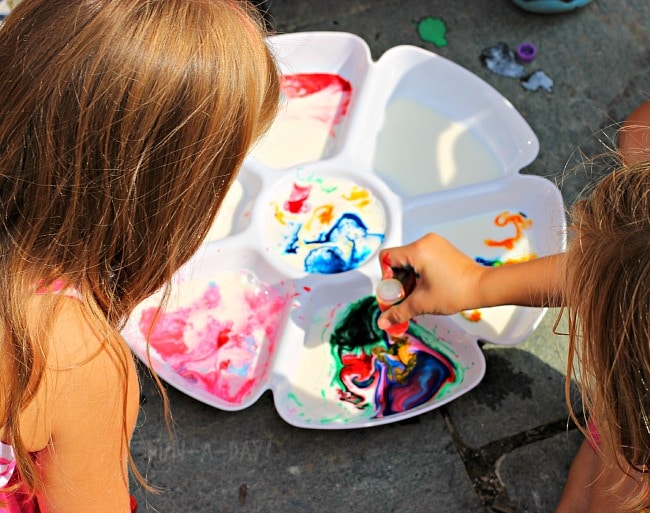
An anecdote in Positive Discipline suggests ignoring the whining entirely, while responding right away to non-whining tones of voices. I think this would work well, as long as the child gets a reminder about it at the beginning of the day. Something along the lines of, “Remember, I’m not going to respond to whining today. But I’m looking forward to talking with you in a normal tone of voice.”
On top of all this, I have to remember to check on myself when it comes to whining. As with tattling and exclusion, whining can really rattle my nerves (as both a parent and a teacher). Because of this, my first reaction is sometimes one of frustration. I have to constantly redirect myself! If I react in frustration, it only exacerbates the problem. It’s better to take a moment, breath, and refocus on how best to help the child. I know my reactions go a long way towards building appropriate choices in the classroom (and at home).
What are some suggestions you have for how to stop whining in the classroom? I’d love to hear about them in the comments below!
The book study
If you’re interested in earning graduate credits for participating in this summers’ book study, please click here for more information. Additionally, here’s a FAQ link if you have any questions about the graduate credits.
PreKinders has all of the summer book studies on one convenient page here. This year’s books are located on that page, along with posts from each previous book study. Pre-K Pages has compiled a FAQ page if you have any more questions about this book study.
Every post from the 2014 summer book study
As each post goes live, the authors will link them up below. This way you can reference all of the information in one spot! By the end of the summer, this will be an awesome resource when you’re facing challenging behaviors in the classroom.
Tools for Teacher Organization
It is so important to continue working on our skills in order to be the best teachers for our students. And part of being the best teacher we can be is staying organized. In my experience, staying organized also helps keep me cool, calm, and collected throughout the school year and throughout each day.
So, I made a list of some handy tools for staying organized both in the classroom and when it comes to the lesson planning and logistics of running a classroom. Check them out below.
I may get commissions for purchases made through links in this post.
- Stacking file trays
- File folders
- Clipboards
- Sorting trays
- Nuts and bolts storage drawers
- Table Caddies
- Book bins
- Preschool lesson planning book
- Large desk planner
- Pocket charts
- Contact paper
- Classroom name plates
- Label maker
Keep in mind that this list is in no way extensive. Being organized looks different for each person. So, make sure that you have all of the organizational tools on-hand. Doing so will certainly reduce your level of stress each day and throughout the school year.
Done-for-You Preschool Resources
Planning meaningful lessons for students week after week, all while balancing other teaching responsibilities and a personal life, can be a daunting task. That’s where Preschool Teacher 101 comes in to save you time!
Preschool Teacher 101 is excited to share with you some amazing lesson plans, activity packs, and much more! We offer a wide variety of themes that are frequently used in preschool classrooms, as well as some less common (but super interesting) themes. Click on the image below to learn more about our guide to the behavior management for the preschool classroom!
Join The Pack from Preschool Teacher 101 today for exclusive access to our amazing products. And we even have three different membership options to suit your needs!
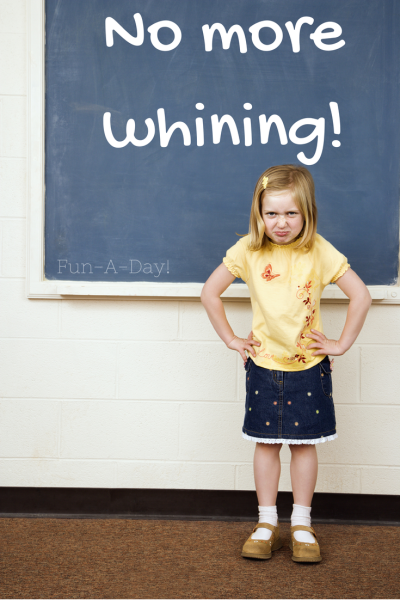
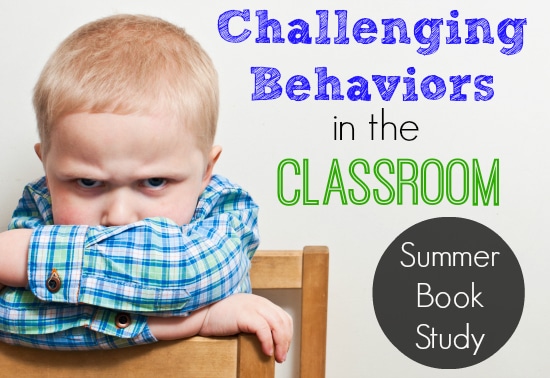
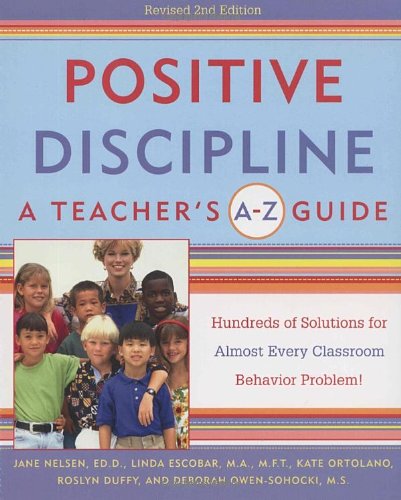
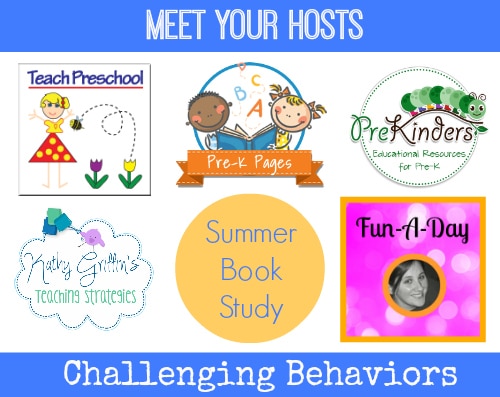
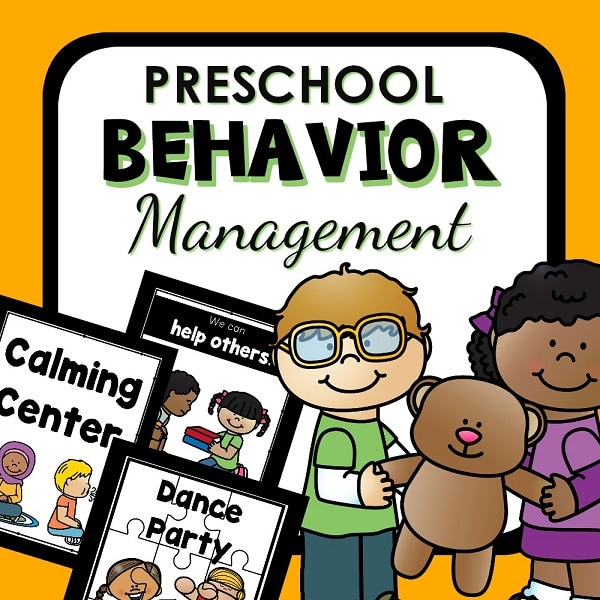
Thank you for yet another helpful and informative post Mary Catherine! It has been such a pleasure working with you on the book study this summer! I agree that whining is right up there on the “push my button” list too. Often, children have learned that whining is a much quicker way to get what they want at home, so they use that strategy at school too. Once one starts it seems to be contagious. Teaching children ways to communicate effectively and providing them with the words and the tone to use is extremely effective. I would love to be in your class!
Great post! Sometimes, if I already have a strong relationship with the child/class, I’ll model the whining back to them, because it just looks so goofy when a grown up is acting that way. It gets them giggling, which often helps reduce the original reason for the whining, and they’ll quickly realize what a drag a whiny voice can be! 🙂
Whining is one of my pet peeves! It’s “nails on a chalkboard” to me. I do the modeling as well in fun way from day one. Children find it so funny when their Teacher whines!
I tell my preschoolers that they are big kids now. We discuss that babies whine and cry because they dont have words to use yet. I point out that as preschoolers they know lots of words now. So when I hear whining I say dont whine, you have words to use, use your words!
I once heard a wise parent respond to a whine with “Whining says ‘I’m not thankful, I’m not grateful'” and then go on to address that heart issue with the child. It’s stuck in my mind all these years as an effective way to address both the annoying sound, and its source.